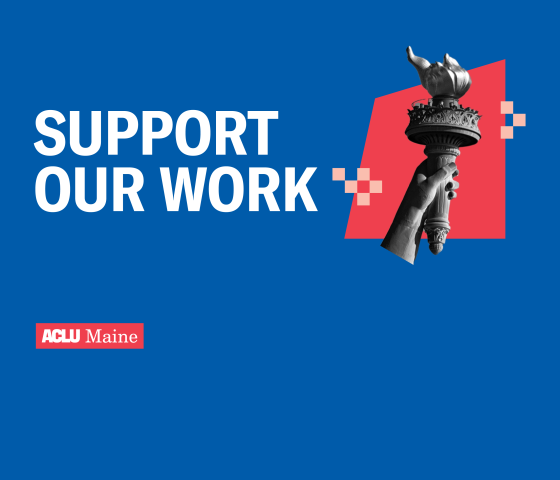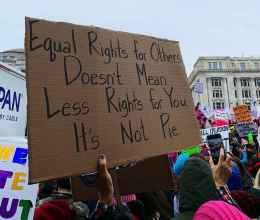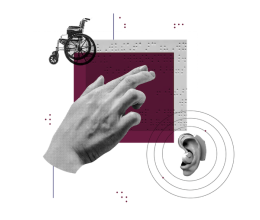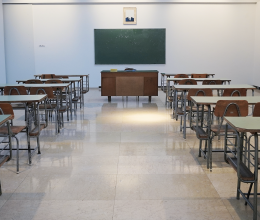Many students heading back to school are being greeted by more police and metal detectors, but few, if any, counselors — this is especially true for students of color. Beyond having more police officers who could be armed, Education Secretary Betsy DeVos is reportedly considering a plan to allow states to buy guns for teachers using federal funds.
Despite the research demonstrating that harsh “school safety” and disciplinary measures are detrimental to students of color, public schools across the country are enhancing efforts to lockdown classrooms, partly in response to the Parkland school shooting that shook the nation.
As state legislatures take up the Trump administration’s call for increasing “law and order” with more school police, and as DeVos considers whether to undo the Obama administration’s reforms to curb racial bias in school discipline, it's important to take a close look at what’s happening in schools. A series of reports produced by the ACLU with UCLA (Center for Civil Rights Remedies, Civil Rights Project) analyzes new data from the U.S. Department of Education, collected from all 96,000 public schools in the country. Part I of our publication focuses on the 11 million days of school students lost to suspension in the 2015-16 school year.
Dramatic disparities exist at the school, district, state, and national level. Black students were just 15 percent of students nationally, but they accounted for 45 percent of all of the days lost due to suspension. This discipline gap contributes to the achievement gap. The 11 million days of lost instruction translates to over 60,000 school years, over 60 million hours of lost education, and billions of dollars wasted in a single school year.
Part II of our report, which is expected to be released in September, focuses on the serious offense data that has been highlighted by the Trump administration in its Data Highlight on School Climate and Safety. Our review of the data examines the severity of the offenses as well as the reporting of school shootings.
Although schools reported over a million “serious offenses” in the 2015-16 school year, over 96 percent of these concerned fights, physical attacks, or threats without weapons. Only 3 percent of the million offenses actually involved a weapon, and less than 3 percent of all public schools reported any incident of physical attack or fight with a weapon.
Every public school in the country was also required to report occurrences of school shootings on campus in this serious offense data, regardless of injury. Without verifying the data, the Department of Education reported ‘‘nearly 240“ schools reported shootings for the 2015-16 school year.
A look at the data would have revealed apparent errors from entire school districts that reported a shooting at every one of its schools. For example, just two school districts accounted for 63 of the reported shootings. The federal data sharply contrast with initiatives like Everytown Research, which found less than 30 school shootings occurred in K-12 settings in the 2015-16 school year by tracking news articles across the country. As we’ve reached out to schools individually, over half have confirmed errors while only 11 have confirmed school shootings. An extensive investigation published by National Public Radio confirmed errors with over 160 schools.
At Liberty Podcast: Criminalizing Schoolkids
One of the most important findings of Part II of our report focuses on the abysmal gaps in school support staff across the country. The study finds nearly 60 percent of schools enrolling 36 million students did not meet the American School Counselors Association’s recommended ratio of 250-to-1 student-to-counselors. Instead, American schools on average have a 444-to-1 student-to-counselor ratio.
Also, up to 1.7 million students were in schools with cops and no counselors, and over 10 million students were in schools that reported police officers (also called school resource officers) and no social workers in the 2015-16 school year. Nationally, schools reported 27,000 sworn law enforcement officers compared with just 23,000 social workers. In his address to school resource officers, Attorney General Jeff Sessions boasted about nearly $75 million in funding that could be coming to schools under the STOP School Violence Act of 2018. Yet not a single penny goes toward equipping schools with support staff required to meet the needs of students.
Lastly, Part II of our report also discusses the 290,000 student arrests and referrals to law enforcement in the 2015-16 country by state, race, and disability status. An alarmingly high and disproportionate number of student arrests or referrals to law enforcement were reported despite the failure of large districts like New York public schools, the Los Angeles Unified School District, and Boston public schools to report either arrests or referrals.
In 2015-16, Black students represented 15 percent of enrollment nationally, but 31 percent of students referred to law enforcement or arrested. This is actually an increase from the 2013–14 school year where Black students were 16 percent of the student enrollment and 27 percent of students arrested or referred. As our forthcoming publication with UCLA highlights, persistent disparities also exist with students with disabilities and Latino, Native American, and Pacific-Islander students.
As summer ends, students are entering schools where their liberties are being unnecessarily constrained even when the risks to their safety are minimal. Too many schools are wrongly investing in security systems and hiring police officers rather than spending their scarce resources on counselors, mental health support, and other services that could enrich students’ lives while preparing them for the future. In doing so, school administrators and state and federal policymakers are unintentionally harming the very children they have a duty to protect.
The data doesn’t lie.







